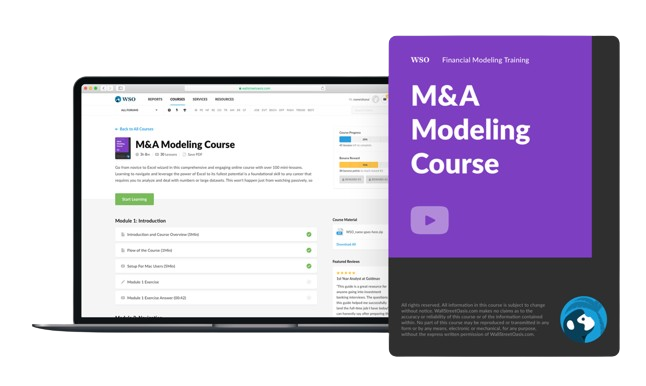Asset Purchase vs Stock Purchase
Asset purchases entail purchasing a company's assets, including buildings, automobiles, equipment, inventory, and goodwill. Stock purchases refer to buying shares of the selling business.
What Is Asset Purchase Vs Stock Purchase?
In mergers and acquisitions (M&A), the transaction can be structured in two ways: either the purchase and sale of company assets or a purchase and sale of company shares. When buying an established firm, the buyer, also known as the acquirer, must decide whether they want to buy the company's stock or its assets.
Asset purchases entail purchasing a company's assets, including buildings, automobiles, equipment, inventory, and goodwill. Stock purchases refer to buying shares of the selling business.
Asset deals occur when the buyer acquires the target company’s operating assets. The seller retains complete business ownership following an asset transaction, and no business ownership is transferred to the buyer.
The buyer can stipulate which assets and liabilities will be acquired in an asset purchase. An asset deal consists of many sales of each asset and agreed-upon liabilities.
Because the buyer can choose whether and how many liabilities to acquire in an asset transaction, they only assume the risk associated with those assets and liabilities acquired.
In contrast, the buyer purchases the entire firm with all its assets and liabilities in a stock deal. The deal's structure may significantly impact prospects for both buyers and sellers. Decisions are often influenced by factors such as a company's industry and legal framework.
To fully comprehend the legal concerns and reach a formal agreement to accomplish the primary goal of both the buyer and the seller, both parties should speak with the acquisition professionals before a deal.
Key Takeaways
- An asset purchase allows a buyer to select specific assets and liabilities from a seller without assuming the legal entity, offering flexibility and potential tax benefits.
- Stocks represent ownership in a company, with common stocks allowing voting rights and profit claims, and preferred stocks offering dividends and a higher claim on assets during liquidation.
- In a stock purchase, the buyer acquires all assets and liabilities of the target company through ownership transfer, which is simpler but includes all existing liabilities without the tax benefits of an asset purchase.
What Is Asset Purchase?
When a buyer purchases a company's assets, it is referred to as an asset purchase, in which the seller continues to be the entity's legal owner.
Equipment, licenses, client lists, and inventory are just a few examples of the specific business assets that the acquirer purchases.
In an asset transaction, a buyer can pick and choose the assets and liabilities of a company they want to purchase. They are not required to assume any liabilities that they believe would harm their firm after the acquisition.
Asset purchases do not include buying the cash of the target company. Moreover, the seller is still responsible for paying off any outstanding debts after the asset transaction.
Because they offer more flexibility, the purchaser prefers asset purchases over stock purchases.
Asset Purchase Advantages
Some benefits of asset purchase transactions are described below:
- Asset purchases can potentially provide a major tax advantage for the acquirer. They allow the acquirer to raise the amount of its capital investment in assets above the current tax assessment and gain tax deductions for depreciation and/or amortization.
- In an asset deal, goodwill, the amount paid to acquire a company that is greater than the fair market value of the company, can be amortized over 15 years using the straight-line method to reduce taxes. When an acquirer purchases a target firm in a stock transaction, goodwill cannot be subtracted until the acquirer sells the shares.
- In addition, as mentioned earlier, what assets and liabilities to acquire in an asset transaction is up to the buyer. This lessens the chance for the buyer to be subject to unforeseen or unreported liabilities from the seller.
- It also cuts down on the time and money spent on due diligence before purchase.
- For instance, if the buyer discovers that the target has numerous receivables that might not be collected, they might simply decide not to buy the receivables of the target company.
- It is possible to effectively compel minority shareholders who do not want to sell shares to give up their shares in an asset sale. Minority shareholders are typically not taken into account in an asset deal.
- Buyers can decide which staff to keep or let go of without hurting the business.
Asset Purchase Disadvantages
Compared to stocks purchases, assets purchases have the following drawbacks:
- The new owners may need to renegotiate and/or update existing contracts, particularly with clients and suppliers. In addition, there may be a need to revise employment contracts with critical employees.
- In addition, the seller normally has more tax obligations than the buyer. Hence, the seller is likely to deliberately lift the purchase price.
- What’s more, in an asset deal, third-party approval is needed when transferring contracts.
For instance, certain intellectual property transfers may need government permission, and government licenses might not be transferable.
Certain assets might need to be re-titled into the new entity's name. This process can be time-consuming and costly as the buyer must pay the re-titling fee and a sales tax.
Aside from paying the outstanding debts and terminating leases, the seller must also liquidate the assets the acquirer does not purchase.
What Is A Stock Purchase?
In a stock purchase, the acquirer obtains the target company's assets and known liabilities by purchasing the target company’s shares, thereby obtaining ownership of the target company. The target company and its operations remain intact in a stock deal.
Compared to an asset deal, a stock transaction is more straightforward. In addition, unlike an asset deal, stock deals do not entail numerous separate transactions of each asset.
This is because the title of each asset lies within the seller’s legal entity, whose ownership is fully obtained by the buyer in a stock purchase. Most contracts, including leases and licenses, held by the target business are automatically transferred to the new owner.
In mergers & acquisitions, stock deals are more commonly used than asset deals, as it is easier to value a firm as a whole as opposed to only valuing its assets.
Stock Purchase Advantages
A stock purchase has the following advantages:
- Stock transactions enable the buyer to purchase all of the firm's assets, with no additional work like asset re-titling or contract assignment needed. As a result, acquirers are relieved of the burden of costly asset re-titling and revaluations.
- Buyers can also avoid transfer taxes.
- Buyers do not have to worry about securing third-party approval, as they can assume licenses and permits directly from the seller.
- Stock purchases are more commonly used because they are simpler than asset purchases. Hedge funds normally conduct M&A deals through stock purchases.
- Stock purchases allow the buyer to access the target company's goodwill and credit history. This means that the buyer can enjoy favorable finance terms and brand recognition of the target, which can take a company a lifetime to develop.
Stock Purchase Disadvantages
The following are the drawbacks of stock deals:
- The buyer cannot cherry-pick assets and liabilities. They also cannot raise the amount of their capital investment in assets above the current tax value to gain tax deductions.
- In addition, it is not tax-deductible to write off goodwill that takes the form of a share price premium.
- The buyer assumes ownership of all assets and liabilities of the target company, including the undesirable ones. To get rid of unwanted liabilities, the buyer has to create separate agreements for the target company to take the liabilities back.
- A stock deal can become complicated, particularly if the target firm has many stockholders.
A sizable number of stockholders in the target company can make coordination challenging because some of the stockholders can be impossible to contact.
The buyer’s efforts to acquire all of the outstanding equity of the target company may be hampered by absent shareholders or those against the transaction.
Asset Purchase Vs Stock Purchase FAQs
Buying certain assets from the seller's business is known as an asset purchase. The assets not purchased by the buyer will remain in the seller's possession.
It's important to keep in mind that certain asset transfers, including those involving real estate, may require that they be noted in the filing.
- Asset purchases can potentially provide a major tax advantage for the acquirer. The acquirer is able to raise the amount of its capital investment in assets above the current tax assessment and gain tax deductions for depreciation and/or amortization.
- What assets and liabilities to acquire in an asset transaction is up to the buyer. This lessens the chance for the buyer to be subject to unreported liabilities from the seller, and it cuts down the time and money spent on due diligence for the buyer.
- It is possible to effectively compel minority shareholders who do not want to sell shares to give up their shares in an asset sale.
- Without hurting the business, buyers are free to decide which staff they want to keep or let go of.
Stocks are not real assets; they are financial assets.
Book assets that are easily convertible into cash are referred to as financial assets.
Free Resources
To continue learning and advancing your career, check out these additional helpful WSO resources:




or Want to Sign up with your social account?